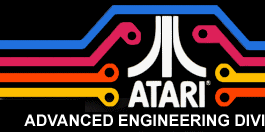Atari's
Advanced Engineering Division, which was a part of Corporate
Research, was a bridge between the Research think tank of
Atari and Atari's own Home Computer Division.
Atari's Corporate Research was developing designs and
technologies that would be available in 7 to 10 years.
The idea was that since much of this "Future" technology did
in fact exist in the labs and in design specifications by
some of Silicon Valley's brightest minds. Under
such visionaries as Chris Jeffers, Cynthia Solomon, Ted Hoff and Alan Kay. The "ASRL" (Atari Sunnyvale
Research Lab) was Atari's own version of
Xerox PARC.
These technologies would
be productized and turned into commercially viable products
for the company to put out, not in 7 to 10 years but within
1 to 2 years.
The core of much of this
new technology was centered around several remarkably
advanced chipsets. These chipsets rivaled and
even outperformed the famous "Lorraine" chipset of the
Amiga, the Macintosh and The Mindset Corp computer.
New
computer designs were being spec'd out and were in the works
to utilize these new technologies. Atari was looking
to enter the 16 bit computer field by the end of 1984 and
early 1985. Sadly, Atari's parent company, run
by Steve Ross - Warner Communications, wanted to unload
Atari desperately, despite the fact that while Atari was
loosing a great deal of money, it was positioning itself to
make a monumental comeback by the end of 1984 in both the
video game and home as well as small business computer
fields. Steve Ross would practically give Atari away to the former head of Commodore. These
advanced Atari Inc. technologies were disregarded or were unknown to
Shiraz Shivji, the new head of Atari engineering and they
would never see the light of day until now.
When Atari was being sold
to the Tramiels, Tedd Hoff was given permission to take
RAINBOW and try to pitch it to other companies.
Most of the Corporate Research and Advanced Engineering
teams ended up at HP.





